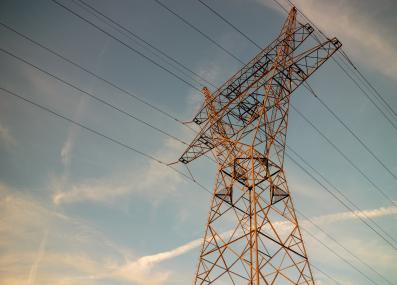New to Climate Change?
Wind Energy
Wind energy is a form of renewable energy, typically powered by the movement of wind across enormous fan-shaped structures called wind turbines. Once built, these turbines create no climate-warming greenhouse gas emissions, making this a “carbon-free” energy source that can provide electricity without making climate change worse. Wind energy is the third-largest source of carbon-free electricity in the world (after hydropower and nuclear)1 and the second-fastest-growing (after solar).2
Cheap, clean energy
The major reason for wind energy’s success is that it’s cheap. In fact, the International Energy Agency estimates that an onshore wind farm built today will make electricity at a lower average cost than any other form of new-built energy.3
We can thank recent advances in wind turbine technology, and economies of scale from its rapid growth, for this ultra-cheap energy.4 Wind turbines aren’t “pushed” like sails catching the wind: they actually work more like airplane wings, with blades shaped so that wind flows unequally fast above and below them. This creates an area of high pressure on one side and low pressure on the other, which “lifts” the blades toward the low-pressure area and makes them turn, powering a generator that makes electricity.
Over the past 40 years, turbine blades have become longer and lighter, letting them turn faster with less wind. Modern turbines also pivot automatically to catch the wind at the best angle. These and other advances have led the price of wind energy to fall almost 95% since 1980.5
Wind energy is also remarkably clean, even compared to other types of carbon-free energy like solar and hydropower. Building new wind turbines does create some greenhouse gas emissions—from making the steel for their towers and fiberglass for their blades, and mining the rarer minerals sometimes used in their generators. But even factoring that in, a wind turbine creates only around a quarter of the greenhouse gas emissions of a solar panel for every kilowatt of electricity, and only a little over 1% the greenhouse gas emissions of a coal-fired power plant.6
Future innovations could make wind energy even cheaper and cleaner. Researchers are experimenting with new materials and construction techniques, as well as designs very different from the familiar “horizontal axis turbine” with its three blades rotating like a pinwheel. “Vertical axis turbines” spin instead like a carousel, while “airborne wind energy” looks more like a kite or plane tethered to a generator on the ground.
Wind power in the larger energy system
Wind energy is “variable”: how much electricity it produces depends on how much wind is blowing. In any energy system that relies partly on wind, other energy sources have to be ramped up when winds are low. Energy storage (saving some energy for later when wind turbines are over-producing) and long-distance transmission (moving electricity from places with lots of wind to places with lots of demand) can help the energy system rely more heavily on wind power around the clock.
Wind energy also needs wide stretches of open space. The average wind turbine in the U.S. is over 330 feet tall, and its blades span a circle over 400 feet wide—longer than a football field.7 These turbines are spaced far apart, sometimes by half a mile or more, so they won’t compete for wind. If you include the entire area of a wind farm in its land footprint, wind farms can take up tens of thousands of acres and make less electricity per acre than any other energy source except bioenergy.8
However, if you only include the land directly affected by the footprint of each turbine, wind power consumes much less land. Wind energy is unique in how easily it can share land with other uses. In the U.S., around 90% of wind turbines are built on cropland or rangeland for grazing animals, most of it actively used.9 In this sense, wind energy “takes up” hardly any land at all.
Wind turbines can also be built offshore, sharing space with fishing and shipping. Offshore wind is more expensive than onshore wind, but it takes advantage of stronger, more consistent wind to provide reliable electricity, and is less visible to people living nearby.10 For built-up coastal regions like the northeastern U.S., where energy demand is high and open land is scarce, offshore wind may be the best way to make clean, renewable energy at a large scale.
Updated August 5, 2025.
1 International Energy Agency: Electricity. (Updated February 16, 2023.)
2 International Energy Agency: Renewables 2021: Executive Summary.
3 International Energy Agency: Projected Costs of Generating Electricity 2020.
4 Wiser, Ryan, et al. "Expert elicitation survey predicts 37% to 49% declines in wind energy costs by 2050." Nature Energy 6, 2021, doi:10.1038/s41560-021-00810-z.
5 U.S. Department of Energy Office of Energy Efficiency and Renewable Energy: "U.S. Department of Energy's Wind Energy Technologies Office—Lasting Impressions." January 2021.
6 Intergovernmental Panel on Climate Change: "Climate Change 2014: Mitigation of Climate Change. Contribution of Working Group III to the Fifth Assessment Report of the Intergovernmental Panel on Climate Change." Annex III: Technology-Specific Cost and Performance Parameters. 2014.
7 U.S. Department of Energy Office of Energy Efficiency and Renewable Energy: "Wind Turbines: The Bigger, the Better." August 21, 2024.
8 Lovering, Jessica, et al. "Land-use intensity of electricity production and tomorrow's energy landscape." PLoS One 17(7), July 2022, doi:10.1371/journal.pone.0270155.
9 U.S. Department of Agriculture: "Wind Energy Land Distribution in the United States of America." July 2017.
10 U.S. Department of the Interior Bureau of Ocean Energy Management: Renewable Energy on the Outer Continental Shelf. Accessed May 22, 2023.









